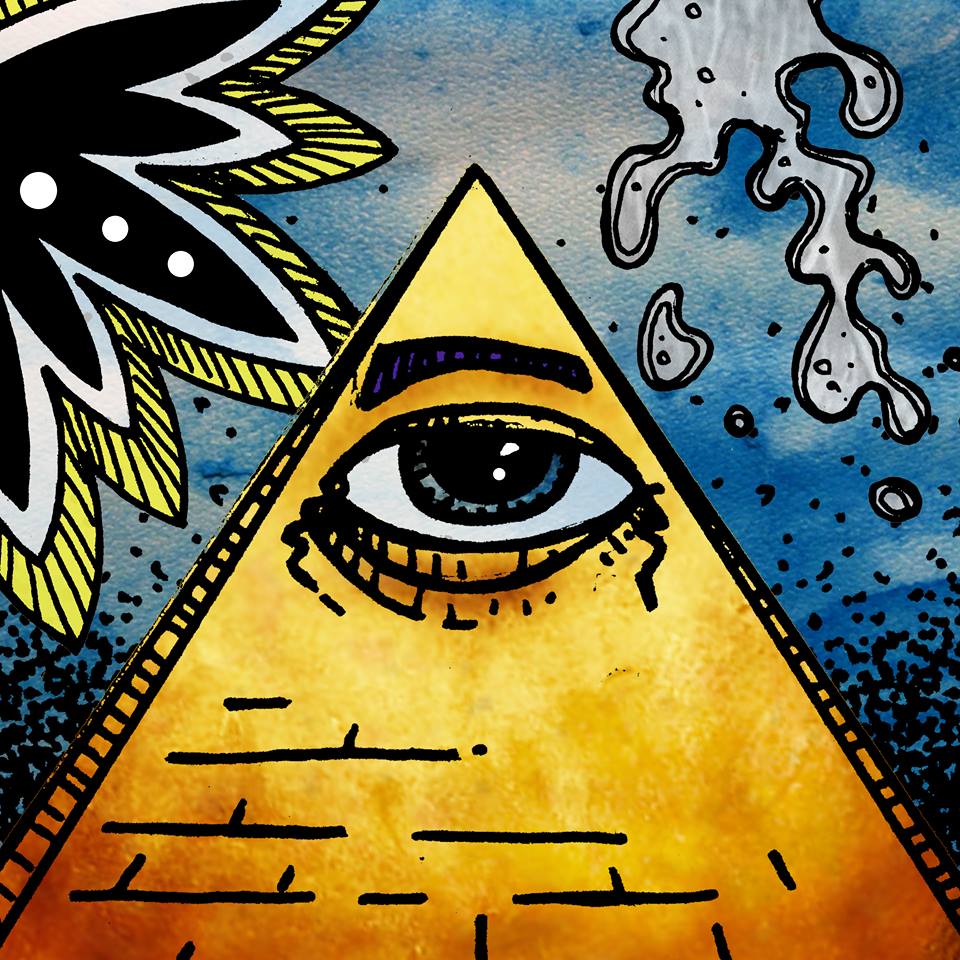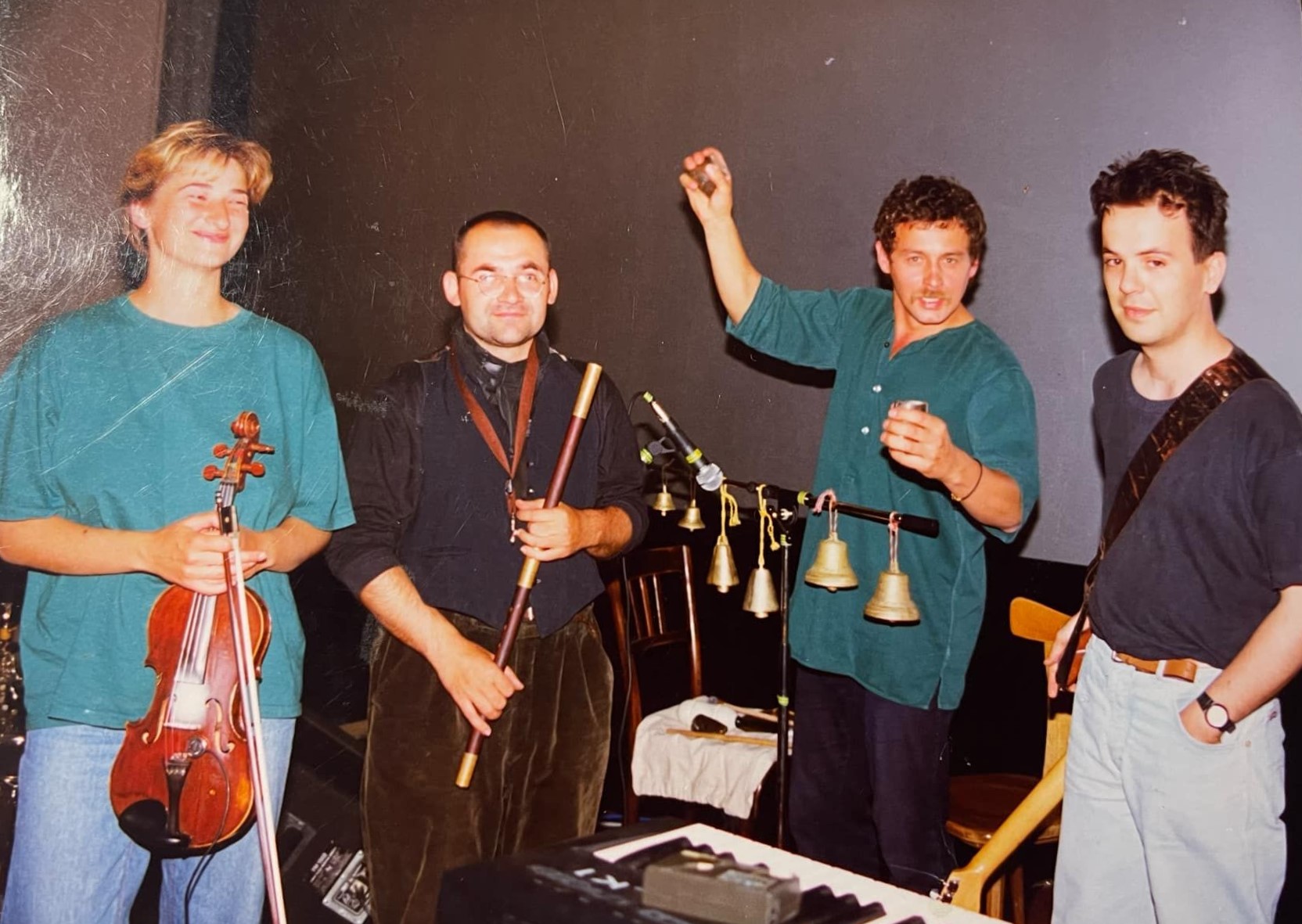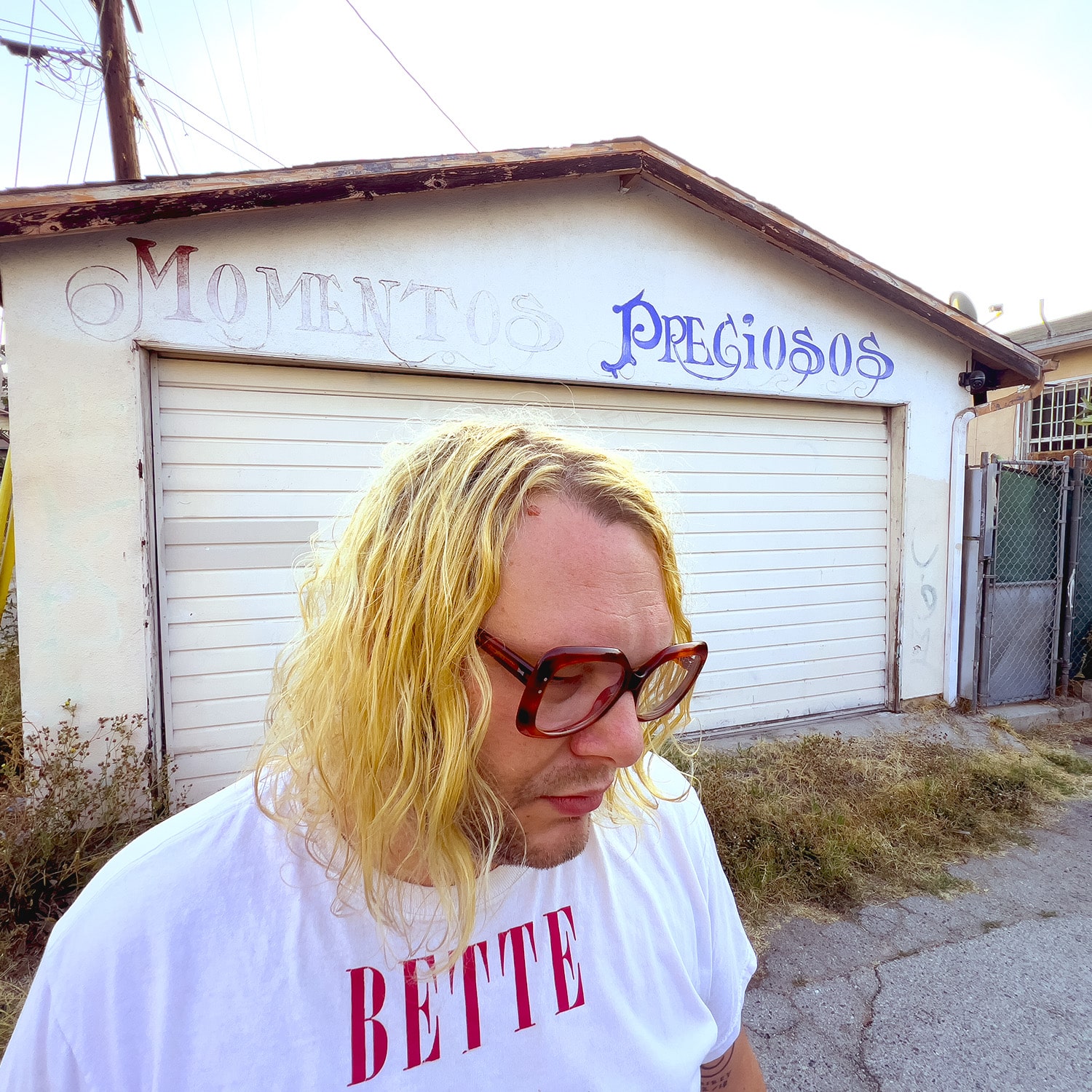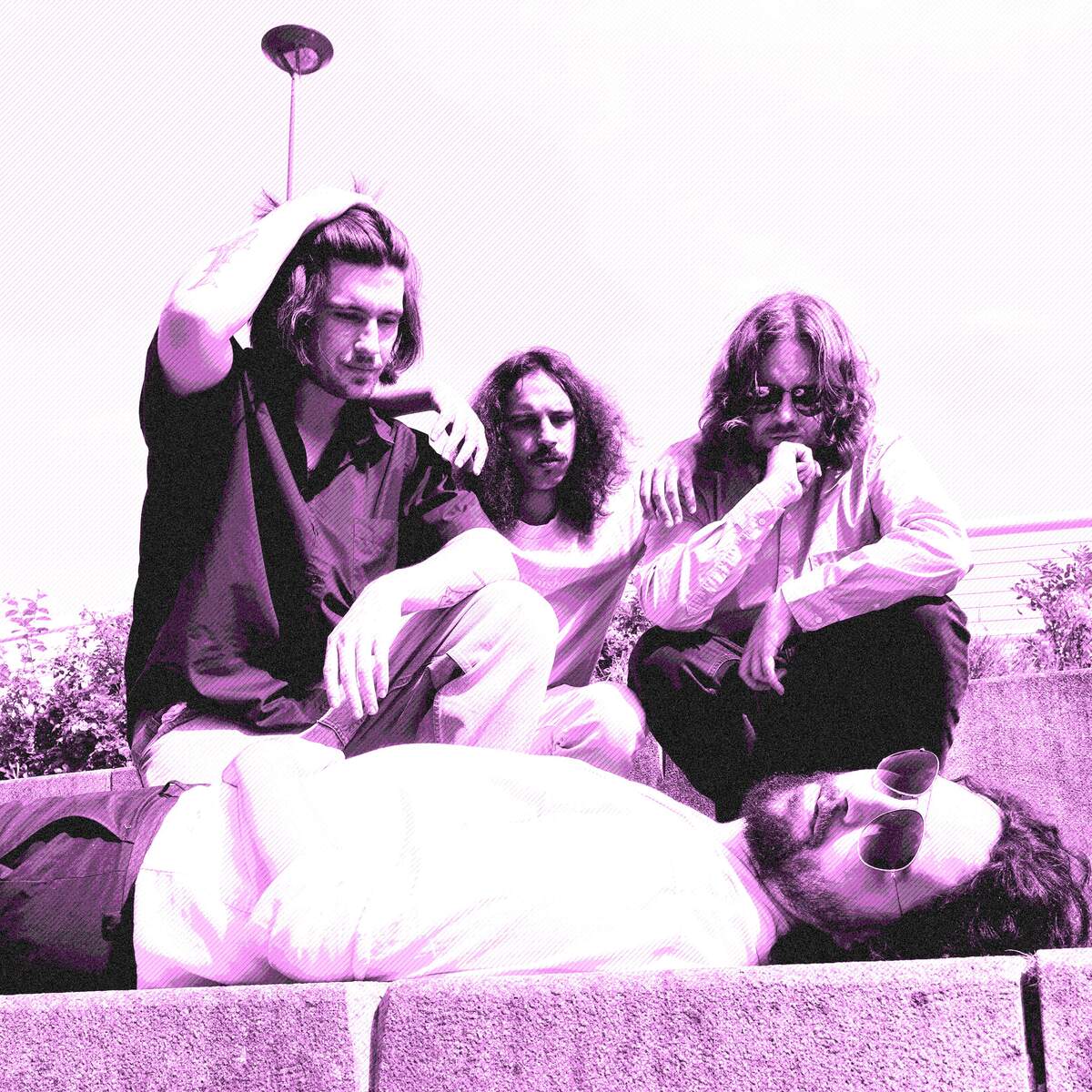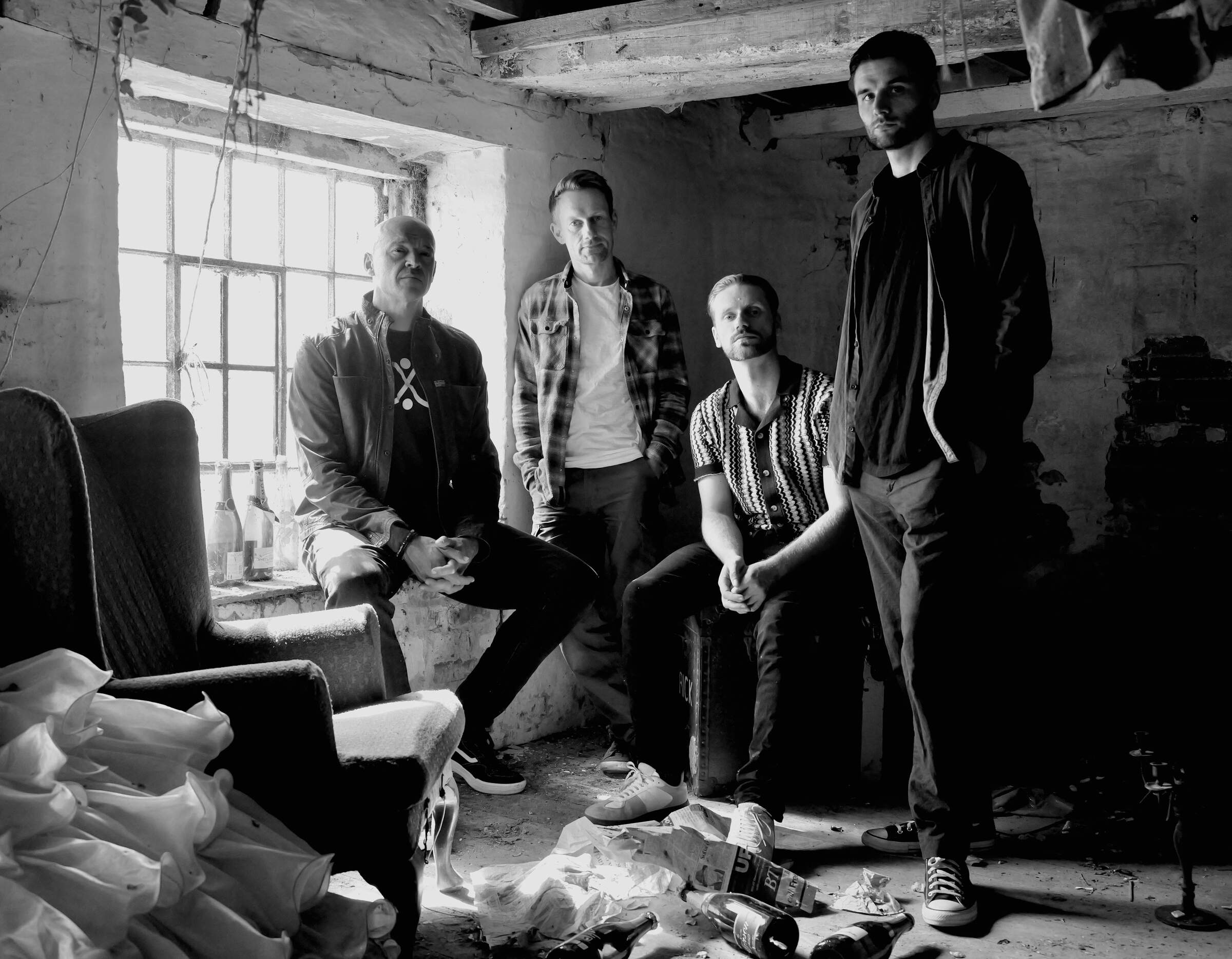Úzgin Űver’s Lost ’93 Tapes from the Hungarian Underground
Back in the early ’90s, Hungary was buzzing. The regime had just changed, and suddenly the underground scene, already wild and weird in the ’80s, was exploding with new energy.
Clubs were popping up, festivals too, and Budapest’s Tilos az Á! became the kind of place you’d hear legends about. Bands like Korai Öröm and Másfél were cooking up trippy, instrumental jams that got folks calling it the golden age of Hungarian “krautrock.”
Right in the middle of all that came Úzgin Űver. Not from the capital, but from the quieter town of Kecskemét, although they ended up more known in Budapest than in their own backyard. Their sound? Impossible to pin down. Even in their earliest recordings from 1993, recently unearthed by Lollipop Shoppe after spending decades in limbo, you can hear a band chasing something unique, instinctual, and totally their own.
That 1993 session was their first time in a proper studio. A label paid for it, but the tapes got shelved and forgotten. Years later, founding member Péter Homoki got his hands on the DAT master again, and thanks to a persistent German friend named Henning of Lollipop Shoppe (seriously, shoutout to Henning), the whole thing is finally out in the world.
It’s a beautiful time capsule. You hear flutes, violins, and drums getting chopped and twisted through their early love for sampling. This was long before “sound design” was even a thing people talked about in that way. Úzgin Űver was already doing it, just following their gut.
The name Úzgin Űver comes from a Mongolian place they saw in a book. Total chance, but it ended up being perfect. There’s this feeling of vast space and ancient mystery in the name, which fits the music so well. They’re not into using traditional melodies, but they still sound deeply rooted, like they’re wandering somewhere between the Hungarian plains and the Mongolian steppe.
One track on the ’93’ release, ‘Thrill,’ was a staple in their live sets but never officially released until now. It still hits hard. There’s a timeless quality to it that makes the whole record feel alive!
The band’s music has always had a cinematic atmosphere to it. Over the years, they’ve worked with puppet theaters and dance groups, even appeared live in two films by legendary Hungarian director Miklós Jancsó. That collaborative spirit comes from their wide artistic backgrounds. Gyula Majoros, for example, is not just a musician but a fine artist, sculptor, and puppet designer. They also spent years touring with the stilt-walking Maskarás theater crew, playing percussive sets with zurna and bass drum, no amps, just pure energy.
Things have changed in the Hungarian underground, but Úzgin Űver still does things their own way. The 1993 release isn’t just a cool historical find, it’s what makes them so special. And with a new acoustic album recorded in 2023 as a sort of 30-year reflection, the story keeps unfolding.
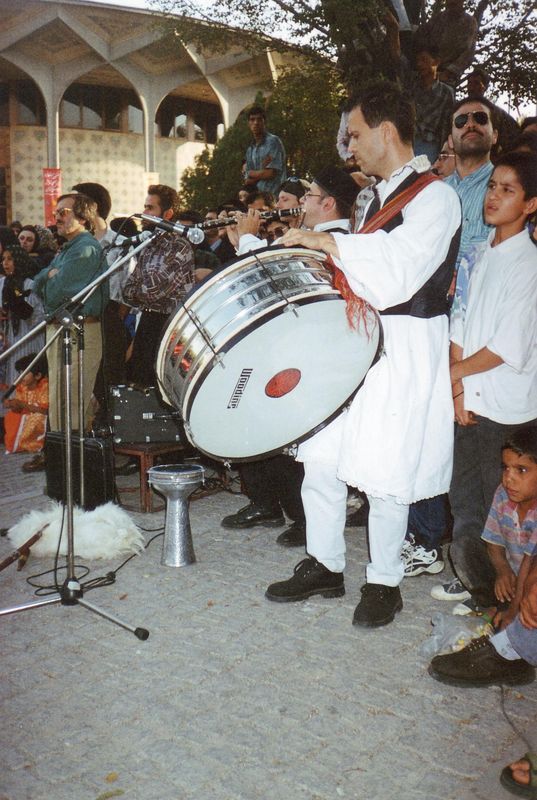
“The underground scene was very strong even in the 80s, despite the oppression.”
Let’s start at the beginning—what was it like growing up in Hungary, musically speaking? What were you surrounded by? What got you into music in the first place?
Péter Homoki: I was born in 1967, so I spent my youth in the ’70s and ’80s, under communist Hungary. It was a very different world back then. Not everything was accessible. You had a harder time getting your hands on music, records too. But despite that, everything managed to seep through eventually, even if sometimes it arrived years late. Culture—music, books, films—was incredibly important to people.
By the time I was 10, I was already buying records on my own, often with help from relatives in Germany. I started with rock, then got into punk and new wave—Led Zeppelin, Bowie, Kraftwerk, The Clash, Ideal, and Japan. Later on, I got into electronic music, dub, hip-hop, world music, and contemporary stuff too.
Alongside playing instruments, I also worked as a DJ. I’ve been part of the legendary Tilos Rádió for 25 years now—I have a weekly two-hour show where I play all kinds of music.
Before Úzgin Űver, were you in any other bands? What kind of stuff were you playing back then?
I lived in Kecskemét, a country town. From the age of 14, I played in local punk/new wave bands starting in the early 80s, originally as a drummer, then guitar and vocals. Later, synthesizers and other machines came into play. It was very difficult to acquire proper instruments; many things were DIY.

The band started in 1991. What was the underground scene like in Hungary at the time? Were there other artists exploring similar sounds, or did you feel like you were forging your own path?
The underground scene was very strong even in the 80s, despite the oppression. After the regime change, it became even stronger, with many new clubs and festivals starting up. We hadn’t played in Budapest until then, only in our hometown, but that changed, and we became better known in the capital than at home. For years, the legendary club, Tilos az Á!, was our regular haunt. It’s interesting how many instrumental bands were popular, for example, Korai Öröm and Másfél; these were the years of Hungarian krautrock.
What was the initial spark that led to forming Úzgin Űver? Did you have a clear idea of what you wanted the music to sound like, or was it more of an evolution?
At the time, we had already been playing together for years in another band, a strange post-new wave and avant-garde group called NagyPalibi. Úzgin Űver started more as a one-off lineup. We were performing with a band called Hammfree Gokart, who invited us to play at a big summer festival called Kelet ’91. We prepared for that concert, chose a name, and it turned out to be a success. The next show was our first in Budapest, opening for VHK. We were lucky.
Your music pulls from so many different traditions—Eastern European, Mongolian, Turkish, Persian, Armenian… Was there a moment when you realized this mix of sounds was your thing?
The folk music elements were mostly brought into our sound by our wind player, Gyula Majoros. I was more into modern music, while Marcsi, our violinist, represented a more classical sound. But honestly, it all came together very instinctively. There was always a strong musical cohesion between us.
Gyula plays many different wind instruments, and he even makes some of them himself—recorders, zurna, duduk, gaida.
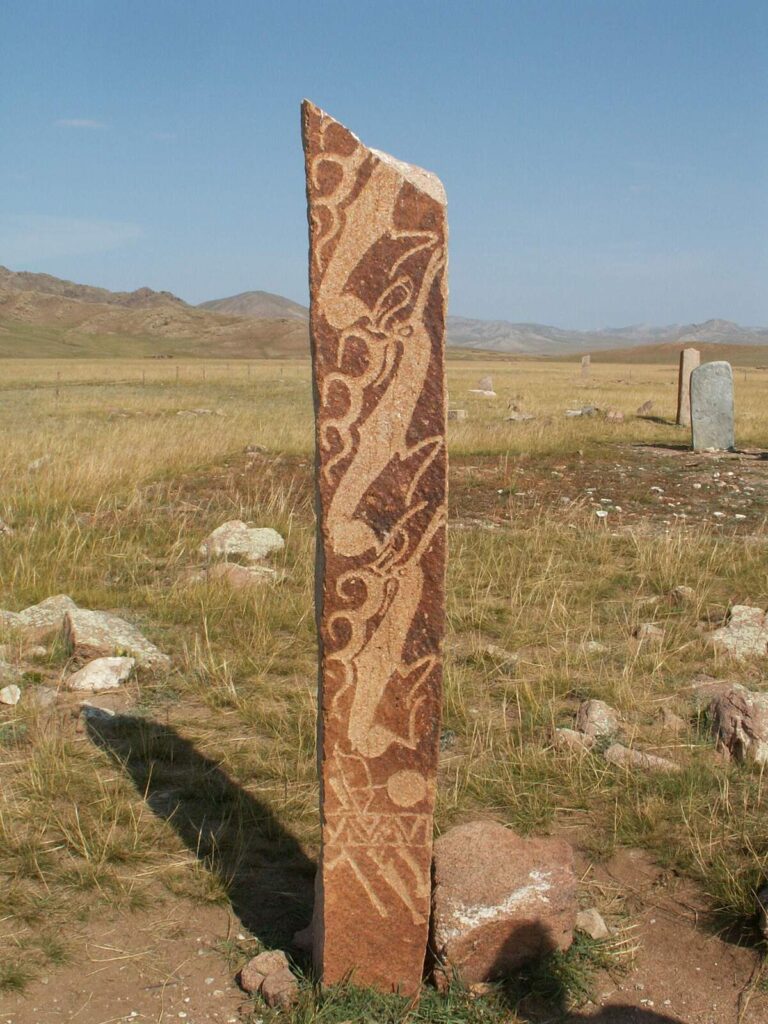
“On the road between Mongolia and Hungary”
What’s the process like when blending these different musical influences? Do you start with a traditional melody and build from there, or does it all come together more instinctively?
We very rarely used traditional melodies; we always worked completely instinctively. Our music isn’t tied to a specific place either; it’s somewhere on the road between Mongolia and Hungary.
What are some non-musical influences on your work? Films, books, landscapes, history… anything that seeps into the music in unexpected ways?
For me, music came first, but I’m also a big consumer of books and films, and history has always interested me. Gyula is a fine artist; we worked in theaters, at countless exhibition openings and performances. An interdisciplinary approach has always characterized us.
The name Úzgin Űver has a deep meaning tied to Mongolian history. Was there something about that story that resonated with your approach to music?
This was a random choice; we saw it in a book. It’s a complicated name, hard to remember, and it was always misspelled. It’s a sacred place in the steppe near the city of Mörön, where large deer stones stand. We haven’t been there, but a friend of ours took photos there, which can be seen on the cover of the ‘ReBucka’ album.
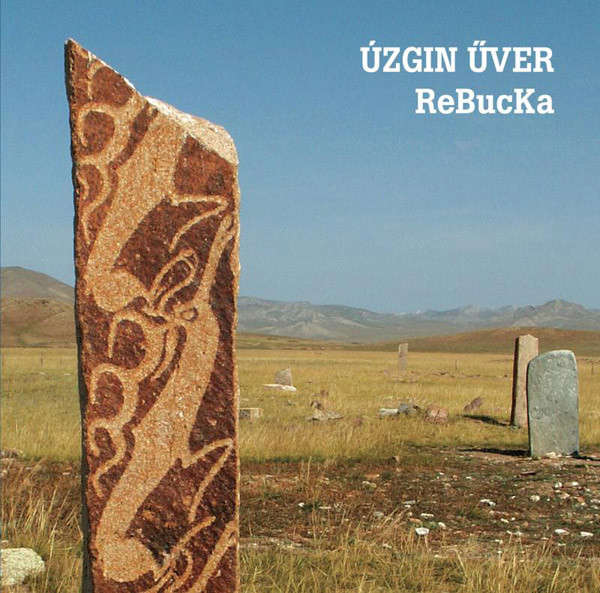
Your first recordings came out in the early ’90s. What do you remember about those sessions? Did they feel like a document of what you were doing live, or was the studio a place to experiment?
The world of studios has always fascinated me. From the second half of the 90s, I made the recordings in my small home studio. We had fewer technical possibilities, but much more time for experimentation. I’d like to highlight the E-MU sampler, which I used a lot. I recorded flutes, violins, or drums, then edited, filtered, and added effects. Is this what they call sound design today?
Some of your albums have a very cinematic, atmospheric feel. Have you ever thought of scoring films? Or do you approach your music like you’re building a soundtrack to something unseen?
I agree with this, and others have often said the same. Despite this, we unfortunately never received a commission for a real film score. However, we worked a lot with puppet and dance theaters, and these pieces of music are featured on our albums, ‘Báb/Színház/zene’ and ‘Vörös Rébék.’ We were in films too: we played live in two films by the legendary director, Miklós Jancsó. I’m proud of that.
You’ve worked with dance theater, film, and art projects. What’s been your favorite collaboration, and why?
Our wind instrumentalist, Gyula, is a fine artist, sculptor, and puppet designer. We worked together at the Ciróka Puppet Theater in Kecskemét, where I was a sound technician. Later, we joined the Maskarás stilt theater as musicians. This was a truly archaic group; we could have even played in the Middle Ages. With the zurna and bass drum duo, we provided a powerful accompaniment even without amplification. This group was very active for five years, with hundreds of performances annually, taking us all over Europe and to exotic places like Iran, South Korea, and Australia.
How do your songs evolve in a live setting? Do you leave space for improvisation, or is everything pretty structured?
Live, we were generally always quite good, despite the fact that we improvised a lot. Only a few songs were properly written; usually, there was a rhythm, a loop, and a recurring melody, but it was never exactly the same. It was similar with the recordings: first, we would improvise on multiple tracks, and then we could choose from that material.
You’ve played all over Europe—what are some of the most memorable places you’ve performed?
We were never a regularly touring band, just had occasional trips, but over the years, many memories accumulated. In ’95, we played at the WUK in Vienna on May 1st, which was a big leftist party, the farewell concert of a very good local band, The More Extended Version. That same year, we visited Prague, playing at the then-emerging, still genuinely underground Roxy. We played twice in Paris, both times on a boat on the Seine (Batofar, La Guinguette Pirate). Our best concert was in Ljubljana. The furthest and strangest gig was in Sydney at a retirement club; we were there with the stilt-walkers during the 2000 Olympics.
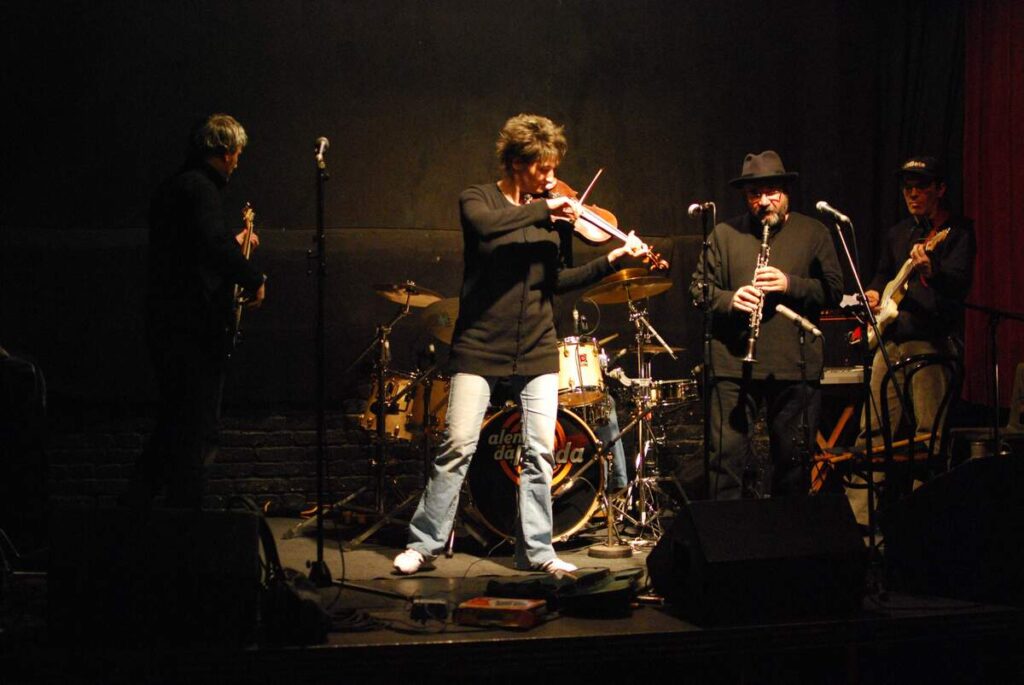
“Today in Hungary, underground culture has essentially ceased to exist”
The underground/world music scene has changed a lot over the years. What’s different now compared to when you started?
When we started, that was the golden age. Today in Hungary, underground culture has essentially ceased to exist; everything is driven by money. You need a manager, or there are no concerts. The good clubs and festivals, and artistic collaborations, have disappeared. Budapest was a much more exciting place 30 years ago.
Let’s talk about ’93’—what’s the story behind this release? Why bring this material back now?
This was our first studio recording; before that, we only had a demo cassette. It was a professional studio with a sound engineer, and a publisher paid for it. The recording was made on an analog tape recorder, and the master was on DAT. There were changes at the publisher, and the album literally remained in a drawer. Years later, I asked for the master.
When our first album was released in ’95, the band’s lineup was different. Decades later, I showed the DAT to my German friend, Henning. Then more years passed, and it’s finally been released now.

How does it feel revisiting these older recordings? Do they still connect with where you’re at musically today?
It was interesting to listen to; the music definitely takes me back to the old days. A lot has happened since then, and perhaps even better albums were made, but it’s a good feeling that it can still be heard 30 years later. The long track on the album, ‘Thrill,’ we played regularly live, but it was never released on an album. I’m glad it is now.
What’s next for Úzgin Űver? Are you working on new material, or just seeing where the road takes you?
Unfortunately, our collaboration definitively ended a few years ago during Covid, and there are no more concerts. The last thing we did was an acoustic live recording in February ’23, a kind of closing music. According to our plans, this will be released this year, as a companion to the ’93’ LP. A few tracks are even the same on both albums, and there’s exactly a 30-year difference. Does anyone want new material? Get in touch with a good offer, who knows?
Klemen Breznikar
Headline photo: Úzgin Űver (1993)
Úzgin Űver Website / Facebook
Lollipop Shoppe Website / Facebook / Bandcamp
